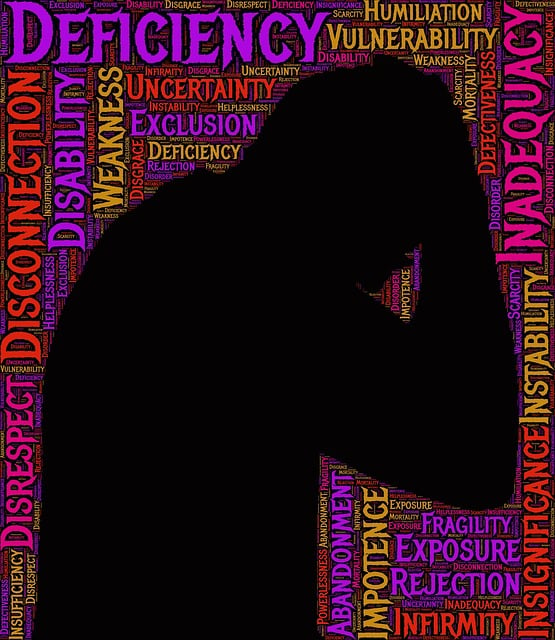Boulder Hypnosis Therapy prioritizes client safety through meticulous risk assessment and harm minimization strategies, addressing client expectations, vulnerabilities, and ethical considerations. Therapists evaluate medical histories, mental health status, and potential hypnosis-related risks, integrating emotional regulation techniques for comprehensive care. Ongoing monitoring, personalized sessions, and crisis management ensure a secure environment fostering healing and trust throughout the therapeutic journey.
In the realm of Boulder hypnosis therapy, risk assessment and harm minimization planning are indispensable for ensuring client safety. This article guides you through the essential components of these processes, beginning with understanding the foundational role of risk assessment in safe practice. We’ll explore specific risks unique to hypnotherapy sessions and provide practical steps for developing a robust harm minimization plan tailored to your Boulder hypnosis therapy practice. Learn how to implement and monitor strategies to foster a secure and therapeutic environment.
- Understanding Risk Assessment: A Cornerstone of Safe Practice in Boulder Hypnosis Therapy
- Identifying Potential Risks and Harms Specific to Hypnotherapy Sessions
- Developing a Comprehensive Harm Minimization Plan for Your Practice
- Implementing and Monitoring Strategies to Ensure Client Safety in Boulder Hypnosis Therapy
Understanding Risk Assessment: A Cornerstone of Safe Practice in Boulder Hypnosis Therapy

In the realm of Boulder Hypnosis Therapy, understanding risk assessment is paramount to ensuring safe and effective practice. It’s a cornerstone that guides therapists in navigating the complexities of human psychology and behavior. Risk assessment involves meticulously evaluating potential hazards and their likelihood within therapeutic settings, ranging from simple relaxation sessions to complex hypnosis interventions. By identifying risks, therapists can implement tailored harm minimization strategies, fostering a secure environment for emotional regulation and empathy building.
This proactive approach extends beyond mere compliance; it empowers mental health professionals in Boulder to anticipate and mitigate challenges. Effective risk management planning, integrated with emotional regulation techniques and empathy building strategies, becomes a powerful toolset. This enables therapists to address not just the present but also foresee potential risks associated with long-term hypnotic induction, ensuring client safety throughout their therapeutic journey.
Identifying Potential Risks and Harms Specific to Hypnotherapy Sessions

In the context of Boulder Hypnosis Therapy, identifying potential risks and harms is paramount to ensuring safe and effective sessions. Unique to hypnotherapy, factors like client expectations, emotional vulnerabilities, and the potential for suggestive influence require meticulous consideration. For instance, some clients might enter therapy with preconceived notions about what hypnosis can achieve, which could lead to disappointment or mistrust if their expectations are not met. Additionally, individuals experiencing mental health crises or substance abuse issues may be particularly susceptible to suggestion, necessitating extra precautions and a tailored approach during sessions.
Beyond client-specific risks, harm minimization planning should also encompass broader considerations relevant to Boulder Hypnosis Therapy practices. This includes addressing issues like privacy and confidentiality, informed consent processes, and the potential for unintended emotional responses during therapy. Incorporating mindfulness meditation techniques or stress management strategies into session structures can help mitigate these risks. Moreover, community outreach program implementations that educate the public about hypnosis and its ethical use contribute to a broader harm-minimization framework, fostering trust and understanding within the community.
Developing a Comprehensive Harm Minimization Plan for Your Practice

In the realm of Boulder Hypnosis Therapy, developing a comprehensive harm minimization plan is an essential step to ensure client safety and well-being. This strategy goes beyond mere risk assessment; it involves creating a robust framework that addresses potential triggers, incorporates self-care routine development for better mental health, and integrates compassion cultivation practices. By doing so, therapists can foster an environment conducive to healing and growth, while also equipping clients with tools to navigate challenges effectively.
The plan should meticulously consider various aspects of the therapeutic process, including session structure, communication protocols, and crisis management strategies. Incorporating Mental Health Education Programs Design can further enhance this approach by promoting client autonomy and empowering them to take an active role in their journey. Ultimately, a well-crafted harm minimization strategy not only protects clients but also positions Boulder Hypnosis Therapy as a beacon of compassionate and comprehensive care.
Implementing and Monitoring Strategies to Ensure Client Safety in Boulder Hypnosis Therapy

Implementing strategies to ensure client safety is paramount in Boulder Hypnosis Therapy. These include thorough risk assessments at the onset of treatment, where therapists identify and evaluate potential hazards specific to each client’s unique circumstances and psychological makeup. This proactive approach involves exploring a patient’s medical history, mental health status, and any pertinent risks associated with hypnosis, such as heightened susceptibility to suggestion or post-hypnotic phenomena. By understanding these factors, therapists can tailor their techniques accordingly, ensuring the safety and comfort of every individual undergoing therapy.
Monitoring client progress and well-being is an ongoing process in Boulder Hypnosis Therapy. Therapists employ various tools and techniques to track changes in clients’ emotional states, behaviors, and overall mental wellness. Regular check-ins, feedback sessions, and objective assessments help identify any adverse effects or complications arising from hypnosis. This continuous monitoring enables therapists to swiftly intervene if needed, ensuring that strategies for anxiety relief and mood management remain effective throughout the therapeutic journey.
In the realm of Boulder Hypnosis Therapy, risk assessment and harm minimization planning are not just recommended practices—they’re essential for ensuring client safety and fostering a secure therapeutic environment. By understanding the unique risks associated with hypnotherapy sessions, developing comprehensive strategies, and consistently implementing them, practitioners can confidently navigate this powerful modality while upholding the highest standards of safe practice. This holistic approach not only protects clients but also enhances the reputation of Boulder Hypnosis Therapy as a responsible and effective treatment option.














